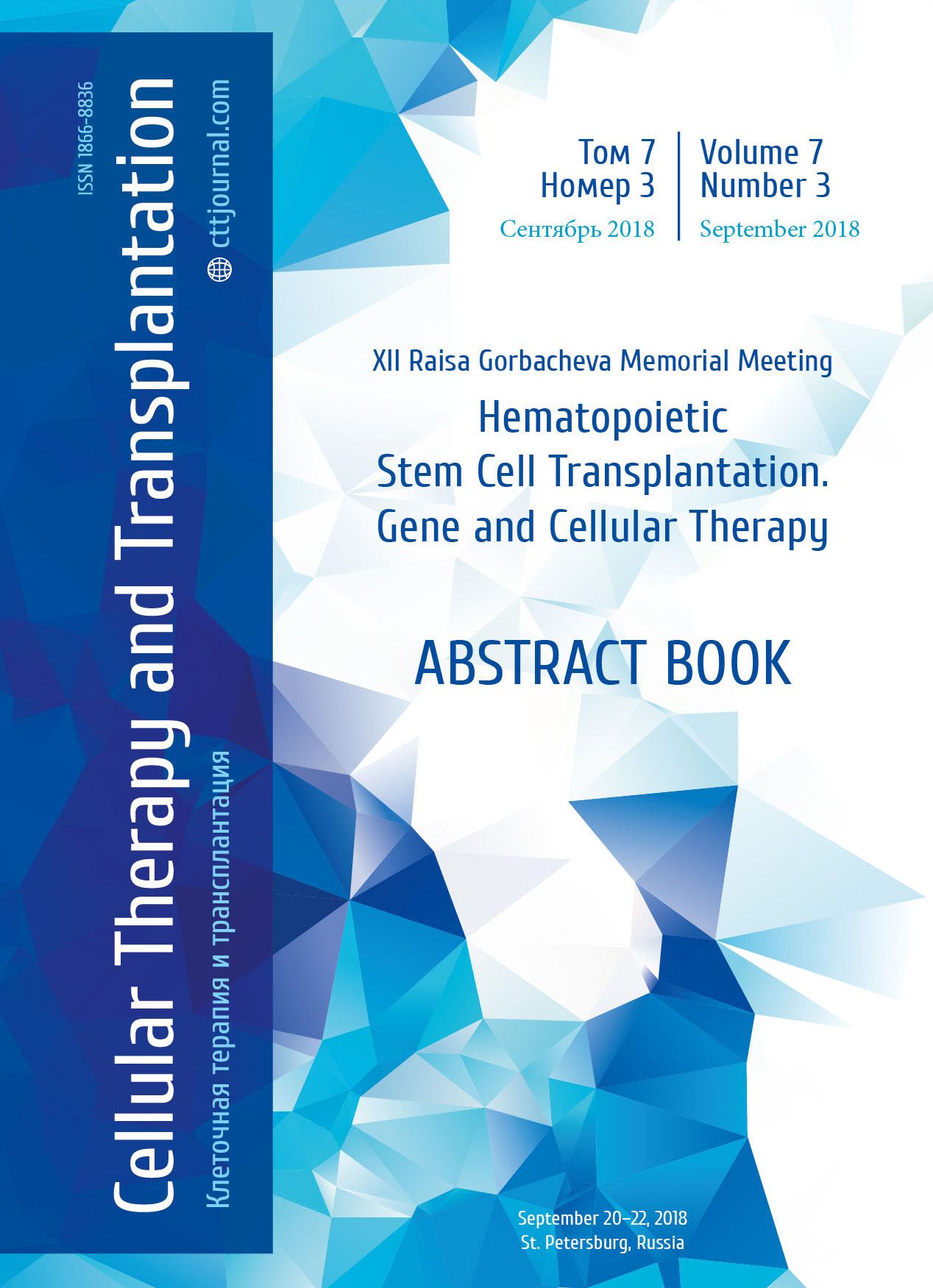Efficacy and toxicity of blinatumomab in acute B-lymphoblastic leukemia
2 National Research Center for Hematology, Russian Ministry of Healthcare, Moscow, Russian Federation
3 National Medical D. Rogachev Research Center of Pediatric Hematology, Oncology and Immunology, Moscow, Russian Federation;
4 National Medical NN Blokhin Research Center of Oncology, Moscow, Russian Federation
5 Saratov State Medical VI Razumovsky University
6 City Clinical Hospital №40, Moscow, Russian Federation
7 National NI Pirogov Medical and Surgical Center, Moscow, Russian Federation
8 Regional Clinical Oncology Center, Volgograd, Russian Federation
9 Leningrad Regional Clinical Hospital, St. Petersburg, Russian Federation
Summary
Introduction
The results of therapy of patients with positive minimal residual disease (MRD+), relapses and refractory acute B-lymphoblastic leukemia (R/R ALL), especially after allogeneic hematopoietic stem cell transplantation (allo-HSCT), remain very poor. The possibilities of chemotherapy (CT) have been exhausted, new therapies is necessary. Blinatumomab (Btm) is a bispecific T-cell engager antibody construct with dual specificity for CD19 and CD3. Therapy with Btm may help to overcome the resistance to chemotherapy (CT) with minimal toxicity, and may be used both before and after HSCT because of low toxicity. Aim was to evaluate the efficacy and safety of Btm in MRD+ and R/R ALL. Patients and methods The study included 59 pts from 10 Russian hematological centers with CD19+ ALL. The median age was 28 (18-62) years. The diagnosis was ALL B-I (EGIL) subtype in 15 pts, B-II, in 37 cases; B-III, in 18 patients, and 1 patient had AL with a mixed phenotype (B/myelo). There were 35 pts in the relapse, 4 of them, with combined lesions bone marrow, i.e., bone marrow (BM) and extramedullary (EM) (RI-14, RII- 14 and RIII-7); primary-refractory disease was documented in 2 cases, and MRD+ was found in 22 pts. The number of BM blasts <50% was detected in 18 pts, and > 50%, in 19 cases. The median MRD level was 0.35 (0.01-7.0)%. Btm was administered to 42 pts (71%) before HSCT, and to 17 patients (29%) after HSCT. The HSCT (related-5, unrelated-10, haplo-3, auto-2) was performed after Btm therapy in 20 pts (34%), 3 of them underwent second allo-HSCT. In 9 pts after allo-HSCT, Btm was used in combination with donor lymphocyte infusion (DLI). The total number of Btm courses was 1 to 7 (median 2). Results In the MRD+ group, negative molecular status was obtained in 20 pts (91%). Complete remission (CR) was achieved in 25 cases (68%) including 18 MRD-negative cases (72%): 13(57%) pts with R/R ALL after CT, 12 (86%), after alloHSCT. Incidence of CR was higher in the group of pts with blasts <50% [78% (14/18) versus 58% (11/19)]. After Btm therapy, 3 pts experienced EM progression of ALL. Relapses developed in 16 pts (36%): MRD+, in 1; BM, in 11; EM, in 3; combined, in one case. In the MRD+ and R/R ALL groups, the 2-year disease-free survival rates (2DFS) were 62% (95% CI 35-89%) versus 28% (95% CI 6-50%), respectively. In MRD + and R/R ALL groups, the 2-year relapse rate (2RR) was 38% (95% CI 4-60%), and 53% (95% CI 25-74%), respectively. Depending on alloHSCT or no transplant after Btm therapy, the 2DFS and 2RR were 59% (95% CI 24-85%) versus 30% (95% CI 7-53%, p=.08), and 27% (95% CI 7-52%) versus 61% (95% CI 30-81%, p=.06), respectively. Hematological toxicity: grade 3 (neutropenia, thrombocytopenia) was observed in 15 pts (25%), hepatic toxicity grade ≥3 was documented in 5 pts (8%); neurotoxicity manifested in 11 pts (19%); the “cytokine release” syndrome was observed in 4 pts (7%). The toxic events in 54 pts (92%) were reversible, and only 5(8%) pts were terminated their treatment prematurely. Only 1 patient after B in combination with the DLI developed aGVHD (skin, grade 3).
Conclusion
Btm treatment in MRD+ and R/R ALL showed high efficacy and acceptable toxicity. Frequency of CR achievement is higher in Btm treatment for R/R ALL after allo-HSCT.
Disclosure
The authors report no conflicts of interest in this work.
Keywords
Acute lymphoblastic leukemia, target therapy, blinatumomab.


